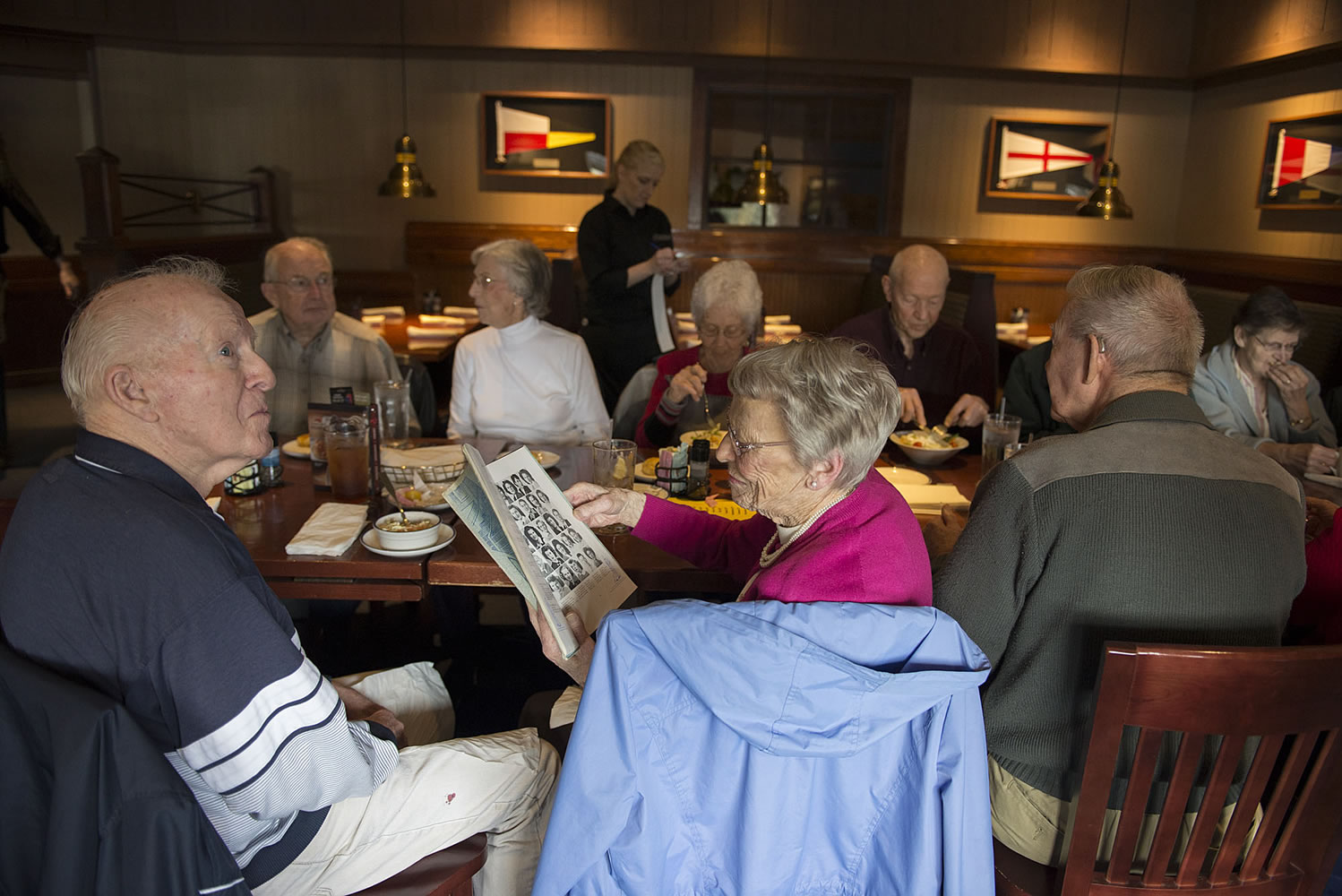About 15 people were sitting in a Vancouver restaurant a few days ago, wondering what to have for lunch.
One woman paused to reflect on another gathering, 74 years earlier, when she and her friends considered a more serious question:
Do we have a future?
The situation seemed that stark when Wells Kennedy was a student at Vancouver High School in December 1941. She and her classmates were sophomores when the United States entered World War II.
“We had an assembly the day after war was declared,” recalled the Vancouver woman, now Wells Kennedy Pederson. “I think we were all in a state of shock: What’s the future?”
Even though teenagers, by nature, look forward to taking on the world, “it was a scary time,” she said.
Pederson and most of the people at that lunch table are members of Vancouver High School’s Class of 1944. And we’re not talking past tense: The Class of ’44 meets for lunch once a month at the Red Lobster restaurant on Vancouver Mall Drive.
Vancouver High graduated about 350 seniors in 1944; about 25 are on the contact list for the monthly get-togethers.
It’s a friendly gathering of people who all are 89 or 90 years old, and who have known each other for 75 years or so.
A couple of them have known each other for more than 85 years, although Bud and Annabelle Rider are a little sketchy on the details. For good reason.
Met as 3-year-olds
“We met when we were 3 years old. That’s what both our mothers said, anyway,” Bud Rider said, smiling. “She was my next-door neighbor until we were 6, and she had to move.”
Bud and Annabelle reconnected in the seventh grade at what then was Shumway Junior High. They made things permanent in 1947.
“We’ve been married 68 years,” Bud said. “We were married after I got back from the service.”
Bud was in the Navy during WWII, as were several other men in the class.
“A good share of the men — the boys — ended up in the service,” Orin Swanson said. “I spent two years in the Navy.”
Swanson had a schedule conflict during the December lunch and shared his memories in a phone conversation.
Vancouver High students didn’t wait for graduation to get involved in the war effort. According to the 1944 yearbook, the Boys’ League sold enough war bonds and war stamps in one day to buy 3 1/2 Jeeps.
The Girls’ League packed Red Cross boxes for children in war areas.
The music program participated, too, performing at the Kaiser Shipyard and Alcoa aluminum plant, as well as at Red Cross blood drives and bond rallies.
“We played at a lot of different places,” said Swanson, a cornet player who was assistant band director. “During the war, it was part of the patriotic things we did.”
Hard to get ammo
The school rifle club gave Trappers a chance to improve their marksmanship, although, as the 1944 yearbook noted, “it was hard to procure ammunition.”
The students’ biggest contributions probably came at the Kaiser Shipyard, which was turning out aircraft carriers and transport ships along Vancouver’s riverfront. Many had summer jobs at the shipyard or worked swing shift after their school day was over.
At least one class member turned her shipyard job into a career. The teacher in the typing and shorthand class asked Noralee Spangler Stanton if she’d be interested in a part-time job at the shipyard hospital.
“I worked for a few hours after school,” Stanton said.
After the war, that hospital transitioned into a part of what now is the Kaiser Permanente health care system; Stanton wound up with a long career as a medical secretary.
So, even with the shadow of war looming 74 years ago, members of the Class of 1944 — with families, careers and lifelong friendships ahead of them — could be confident of their future.
And they still are. At their December gathering, they distributed their lunch schedule for 2016.




